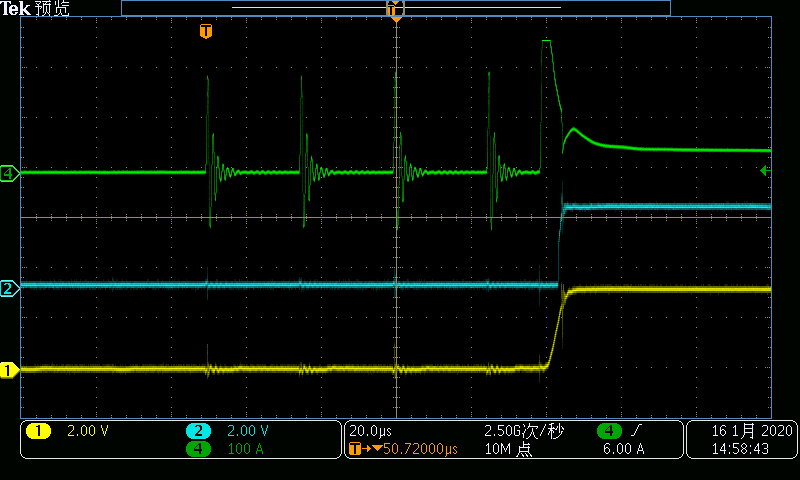Other Parts Discussed in Thread: INA240, INA381, INA293, INA303, INA302, INA301, INA300, INA290-Q1
Hi,
When using INA200 for short circuit current sensing,the output of amplifier(Vbus) is wrong.
As shown below,there are two possible reasons.
1. The duration of the first four current pulses is too short.
It's about 1~2 us.
2. Reverse current affects current detection.
The current on the sampling resistor oscillates continuously in the bidirectional direction
Please help to analyze the possible reasons,Thanks.
Channel 1:Vbus
Channel 2:SC_N
Channel 4:R1's Current


